Abstract
Cellular localization of 2,4-dinitrophenyl (DNP) groups in the peripheral lymphoid system of guinea-pigs was studied at various times after painting the skin with 2,4-dinitrochlorobenzene (DNCB) by the immunofluorescent method using anti-DNP antibody. The cells taking up the stain (DNP cells) were shown to be mainly lymphocytes. At 1-6 h after painting the majority of DNP cells were found in the peripheral blood and the spleen but the maximum number was reached in the lymph node draining the site of DNCB application 12 h after painting. Injecting cyclophosphamide (CY) 3 days before painting with DNCB, heightened the number of DNP cells residing in the draining node. The animals treated with the tolerogen, 2,4-dinitrobenzene sulphonic acid sodium salt (DNBSO3Na), and then painted with DNCB, had fewer DNP cells than those animals which had simply been painted once with DNCB. The culture supernatants prepared from the draining nodes of both normal and tolerant animals partially blocked the anti-DNP antibody binding with DNP cells. It is suggested that the cells associated with DNP groups residing in the draining lymph node act as immunogens in the immunizing process of contact sensitivity.
Full text
PDF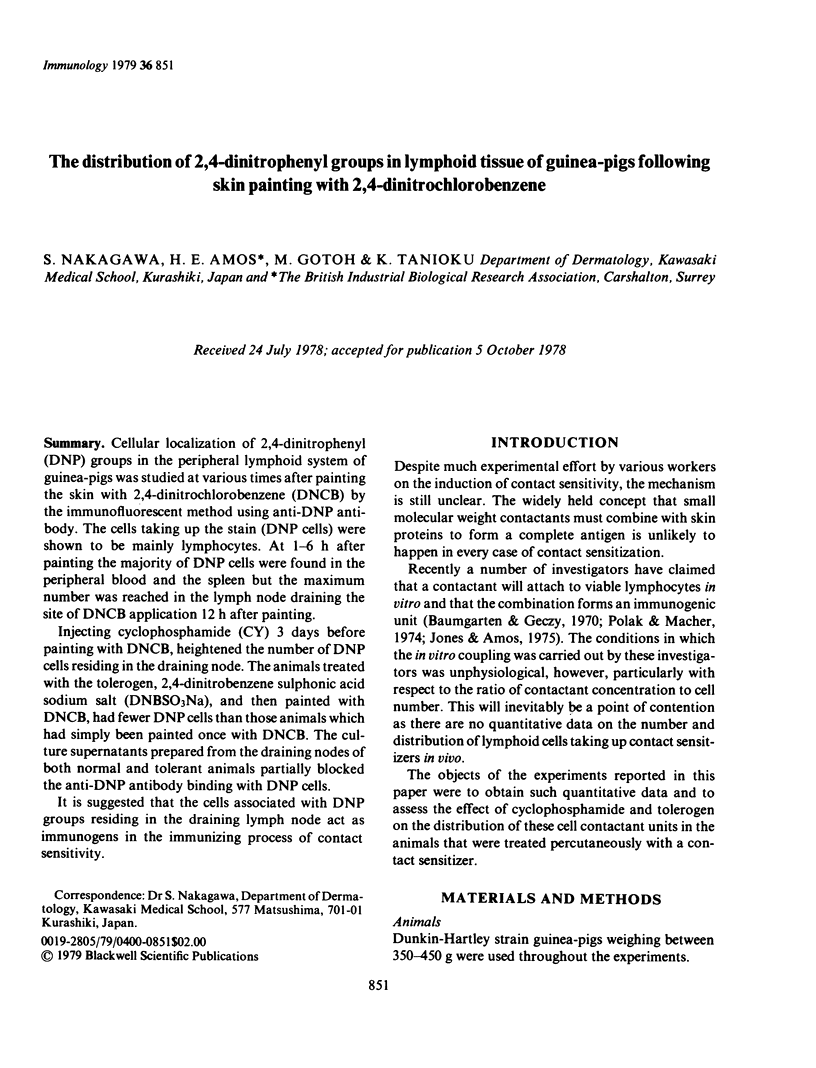
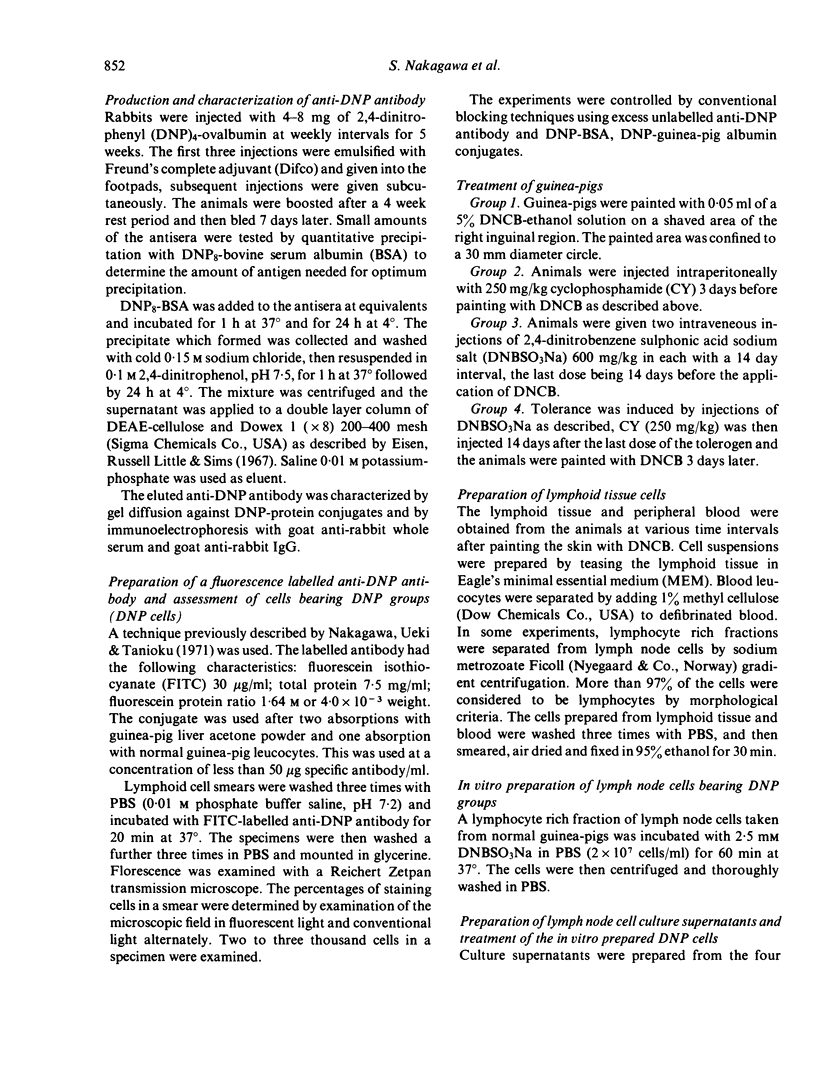
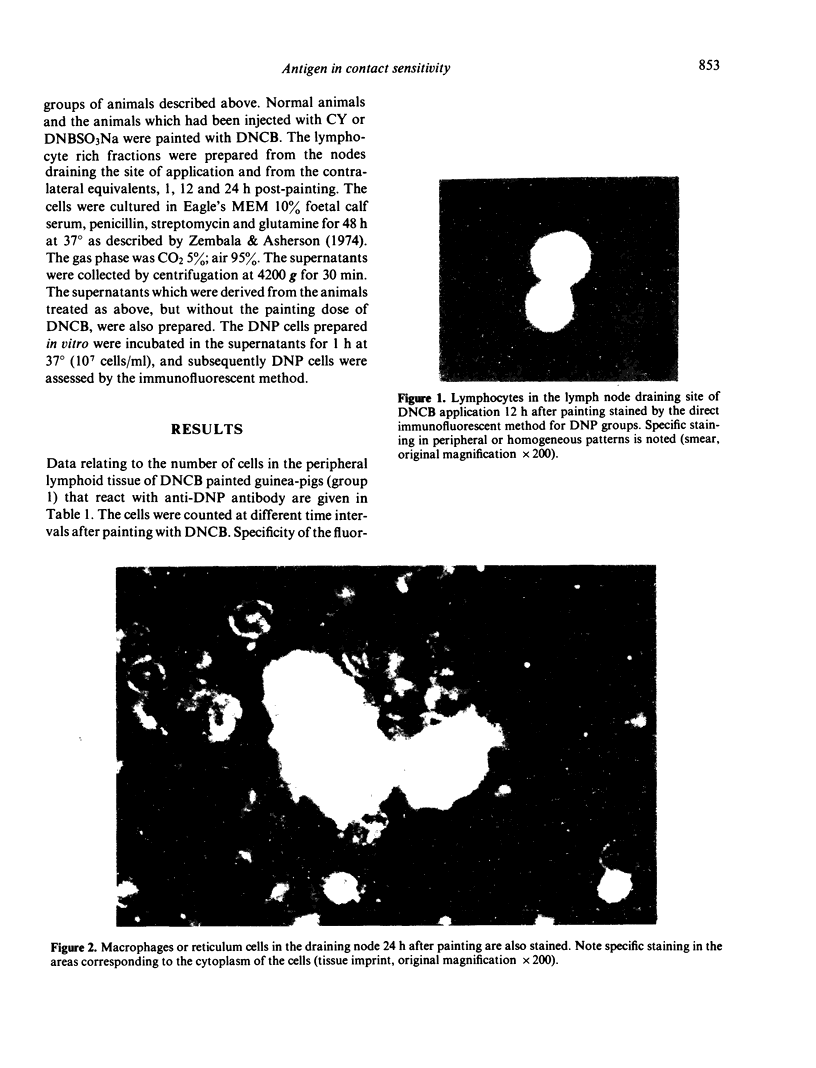
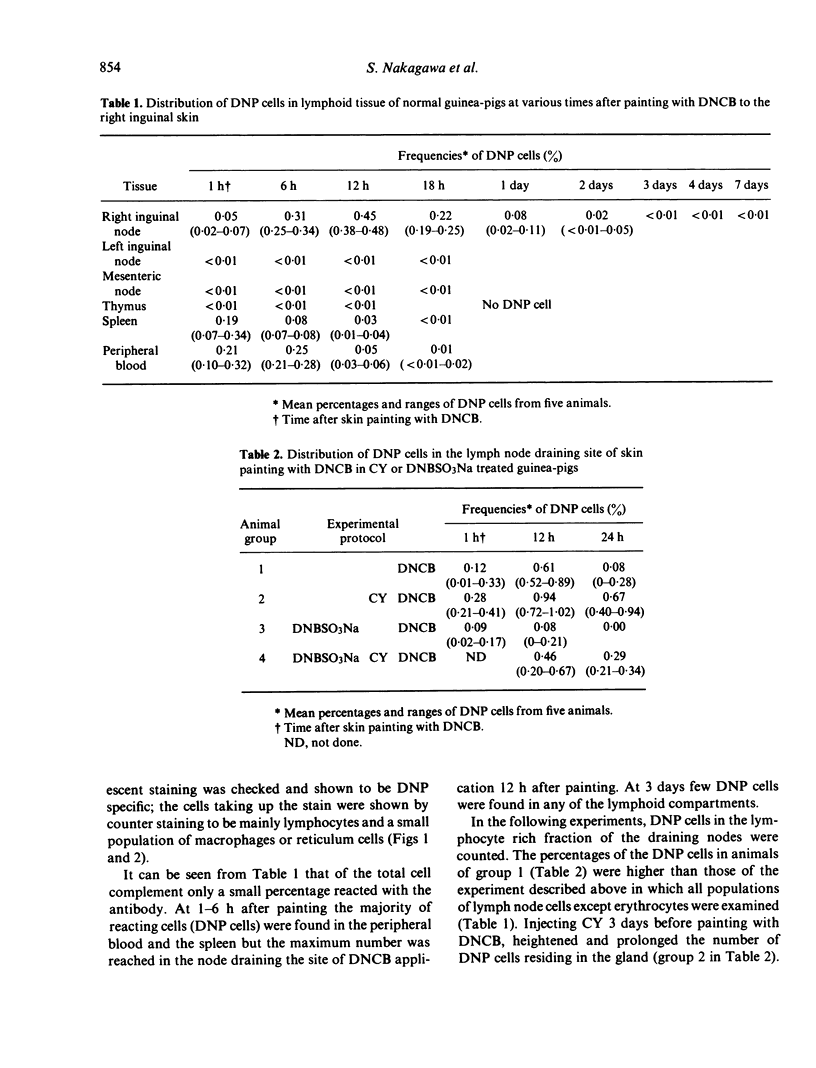
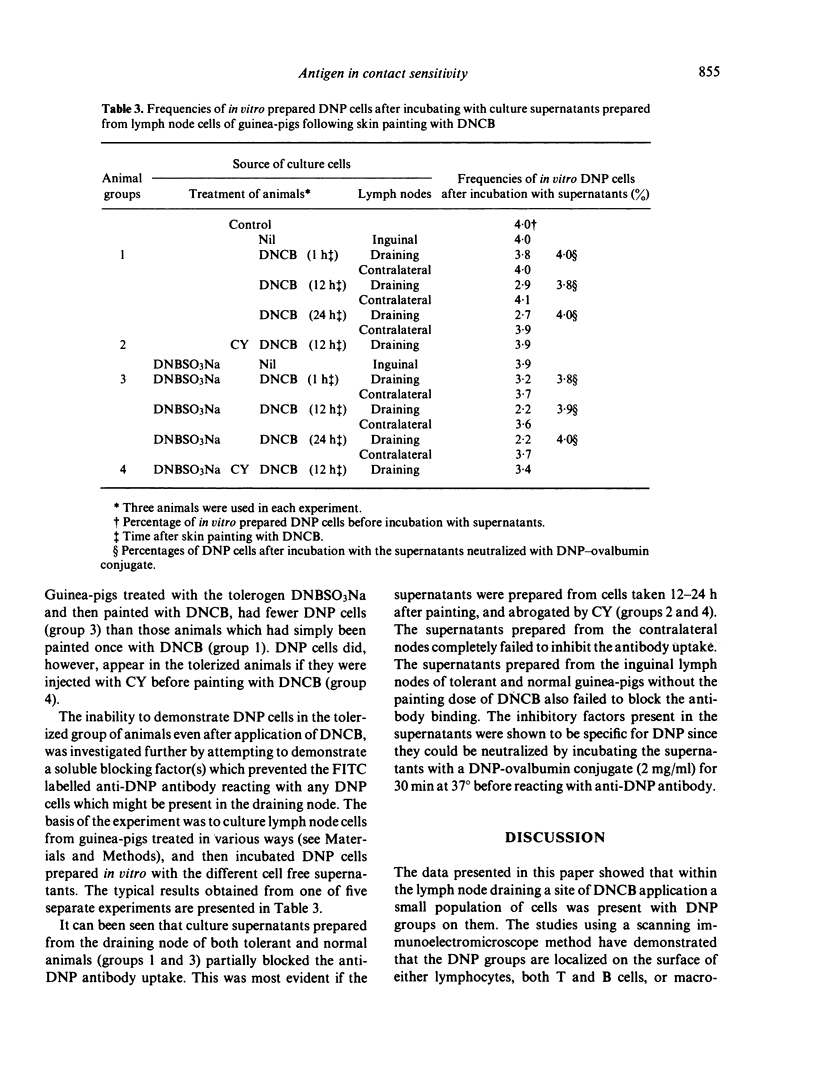
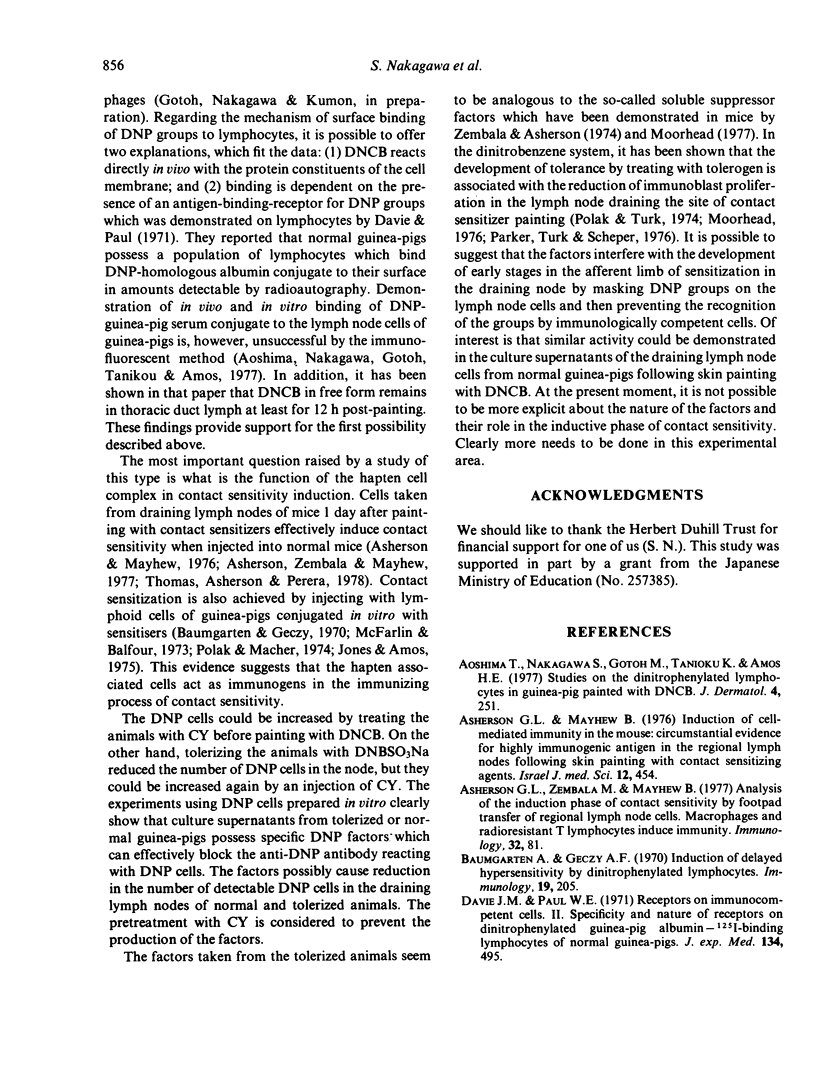
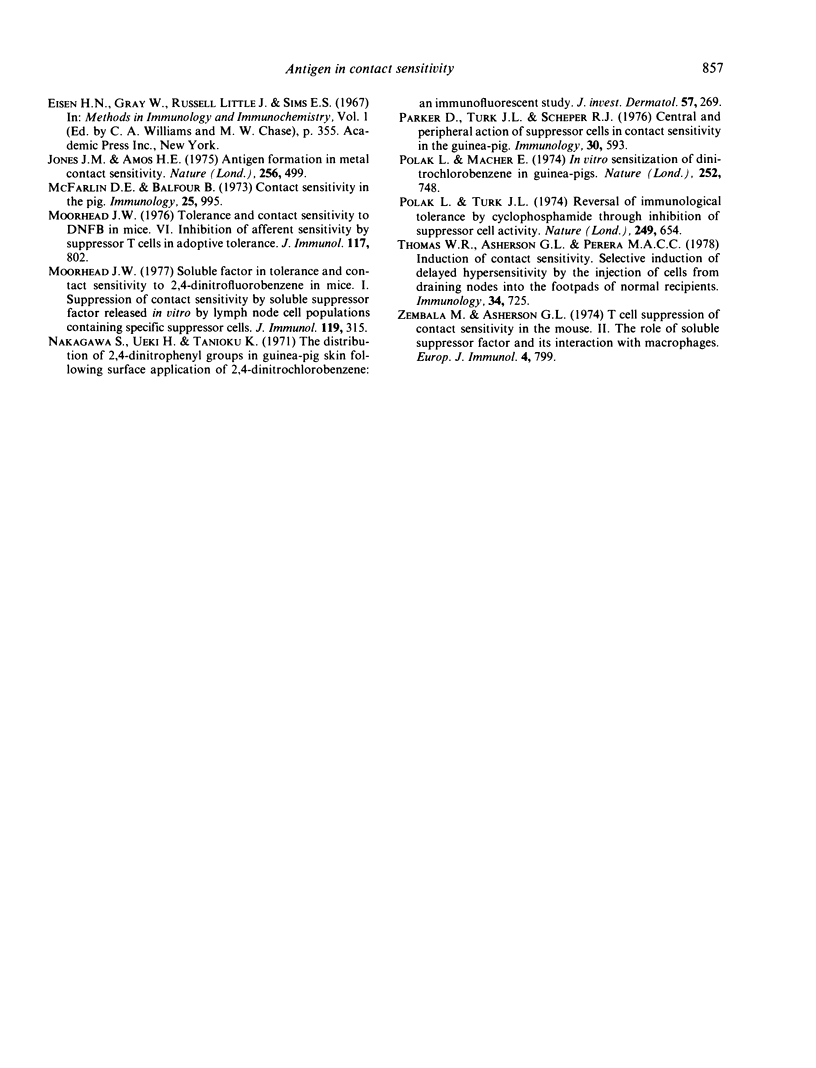
Images in this article
Selected References
These references are in PubMed. This may not be the complete list of references from this article.
- Aoshima T., Nakagawa S., Gotoh M., Tanioku K., Amos H. E. Studies on the dinitrophenylated lymphocytes in guinea pig painted with DNCB. J Dermatol. 1977 Dec;4(6):251–254. doi: 10.1111/j.1346-8138.1977.tb00995.x. [DOI] [PubMed] [Google Scholar]
- Asherson G. L., Mayhew B. Induction of cell-mediated immunity in the mouse: circumstantial evidence for highly immunogenic antigen in the regional lymph nodes following skin painting with contact sensitizing agents. Isr J Med Sci. 1976 Apr-May;12(4-5):454–467. [PubMed] [Google Scholar]
- Baumgarten A., Geczy A. F. Induction of delayed hypersensitivity by dinitrophenylated lymphocytes. Immunology. 1970 Aug;19(2):205–217. [PMC free article] [PubMed] [Google Scholar]
- Davie J. M., Paul W. E. Receptors on immunocompetent cells. II. Specificity and nature of receptors on dinitrophenylated guinea pig albumin- 125 I-binding lymphocytes of normal guinea pigs. J Exp Med. 1971 Aug 1;134(2):495–516. doi: 10.1084/jem.134.2.495. [DOI] [PMC free article] [PubMed] [Google Scholar]
- Jones J. M., Amos H. E. Antigen formation in metal contact sensitivity. Nature. 1975 Aug 7;256(5517):499–500. doi: 10.1038/256499a0. [DOI] [PubMed] [Google Scholar]
- McFarlin D. E., Balfour B. Contact sensitivity in the pig. Immunology. 1973 Dec;25(6):995–1009. [PMC free article] [PubMed] [Google Scholar]
- Moorhead J. W. Soluble factors in tolerance and contact sensitivity to 2,4-dinitrofluorobenzene in mice. I. Suppression of contact sensitivity by soluble suppressor factor released in vitro by lymph node cell populations containing specific suppressor cells. J Immunol. 1977 Jul;119(1):315–321. [PubMed] [Google Scholar]
- Moorhead J. W. Tolerance and contact sensitivity to DNFB in mice. VI. Inhibition of afferent sensitivity by suppressor T cells in adoptive tolerance. J Immunol. 1976 Sep;117(3):802–806. [PubMed] [Google Scholar]
- Nakagawa S., Ueki H., Tanioku K. The distribution of 2,4-dinitrophenyl groups in guinea pig skin following surface application of 2,4-dinitrochlorobenzene: an immunofluorescent study. J Invest Dermatol. 1971 Oct;57(4):269–277. doi: 10.1111/1523-1747.ep12261593. [DOI] [PubMed] [Google Scholar]
- Parker D., Turk J. L., Scheper R. J. Central and peripheral action of suppressor cells in contact sensitivity in the guinea-pig. Immunology. 1976 Apr;30(4):593–597. [PMC free article] [PubMed] [Google Scholar]
- Polak L., Macher E. In vitro sensitisation to dinitrochlorobenzene in guinea pigs. Nature. 1974 Dec 20;252(5485):748–749. doi: 10.1038/252748a0. [DOI] [PubMed] [Google Scholar]
- Polak L., Turk J. L. Reversal of immunological tolerance by cyclophosphamide through inhibition of suppressor cell activity. Nature. 1974 Jun 14;249(458):654–656. doi: 10.1038/249654a0. [DOI] [PubMed] [Google Scholar]
- Thomas W. R., Asherson G. L., Perera M. A. Induction of contact sensitivity. Selective induction of delayed hypersensitivity by the injection of cells from draining lymph nodes into the footpads of normal recipients. Immunology. 1978 Apr;34(4):725–731. [PMC free article] [PubMed] [Google Scholar]




